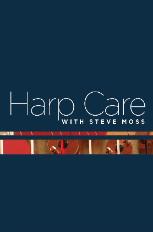[vimeo 4214748]
Here’s another of the great videos Michele Rassmussen shot at a harp care class I gave at Lyon & Healy West. Here, I focus on the knot used to anchor 4th and 5th octave nylon or gut strings. While you would use a string anchor of some kind to tie strings in the 1st, 2nd, and 3rd octaves (I use one-inch pieces of 5th octave A,B, and C gut strings), the 4th and 5th octave strings are so thick that no anchor is necessary, and using one only makes the whole operation that much more difficult.
One of the trickiest things about the larger gut strings is how stiff and strong they are. The key to coaxing them into a knot is to weaken the part you want to work with by pulling it between your finger and thumb with a slight bending motion, as you see in the video. When you’ve done this successfully, the gut will turn from opaque to white. The trick, which comes with practice, is in not weakening any more of the string than you need to tie your knot.
With the larger nylon strings, you have the opposite problem. There is nothing you can do to weaken the nylon, so it keeps fighting back. Learning to tie them takes practice and patience. Or, if you prefer, you can avoid them and only string your 4th and 5th octaves in gut. I know gut is much more expensive, but nylon strings in this register really don’t sound good on pedal harps (and pedal-tensioned lever harps). And no, the string makers are not paying me to say this!


So true, I wish I had read this before I went out and bought a nylon 4th octave B! I can’t seem to tie a knot in the string, it keeps on slipping!